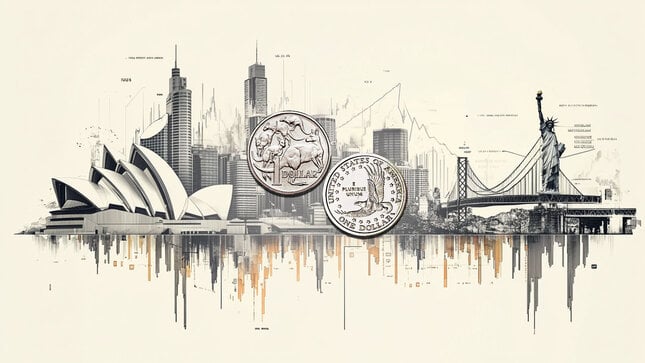In another stagflation warning sign, the U.S. service sector contracted in April even as service prices rose.
The Institute for Supply Management's non-manufacturing PMI dropped to 49.4 in April, dipping from 51.4 in March. The expectation was for the index to increase to 52.0.
A PMI reading below 50 signals a contraction in the service economy.
It was the lowest non-manufacturing PMI reading since December 2022.
Services account for more than two-thirds of U.S. economic activity.
An index measuring new orders for service businesses dipped to 52.2 in April, falling from a March reading of 54.4. Meanwhile, production in the service sector plunged from 57.4 to 50.9. The last time the services production index fell that low was May 2020, in the early months of the pandemic.
The survey's measure of services sector employment also fell, dropping from 48.5 in March to 45.9 in April.
Even as the service economy contracts, prices are heating up. The survey's measure of business input prices jumped to 59.2 from 53.4 in March.
This dovetails with CPI data that showed service price inflation increased to 5.27 percent in March. That was up from 4.95 percent in February. Service prices account for 57 percent of the CPI.
There is a word for a combination of rising prices, lagging economic growth, and rising unemployment - stagflation.
After the Federal Reserve FOMC meeting last week, Fed Chair Jerome Powell insisted there were no signs of stagflation.
“I don't really understand where concerns about stagflation are coming from. I don’t see the stag or the 'flation.”
You can certainly argue that the economic picture is nothing like the stagflationary years of the 1970s. But the warning signs are clearly there - as evidenced by the services PMI report and other recent economic data.
And the macroeconomic foundation has been set for a period of stagflation. We had an unprecedented amount of inflation created during the pandemic. The Federal Reserve alone injected nearly $5 trillion in new money into the economy. This is the definition of inflation. One of the consequences of monetary inflation is price inflation. And despite the Fed's efforts to quell price inflation, the central bank hasn't done enough. In fact, monetary policy remains loose by historical standards. That means the Fed continues to create inflation.
But the Fed has hiked interest rates enough to break things in this debt-riddled bubble economy. We're beginning to see signs of economic stagnation, including the recent non-manufacturing PMI, the first quarter GDP slowdown, and the April labor report.
Powell's assurances notwithstanding, stagflation appears to be a very real possibility.
Money Metals Exchange and its staff do not act as personal investment advisors for any specific individual. Nor do we advocate the purchase or sale of any regulated security listed on any exchange for any specific individual. Readers and customers should be aware that, although our track record is excellent, investment markets have inherent risks and there can be no guarantee of future profits. Likewise, our past performance does not assure the same future. You are responsible for your investment decisions, and they should be made in consultation with your own advisors. By purchasing through Money Metals, you understand our company not responsible for any losses caused by your investment decisions, nor do we have any claim to any market gains you may enjoy. This Website is provided “as is,” and Money Metals disclaims all warranties (express or implied) and any and all responsibility or liability for the accuracy, legality, reliability, or availability of any content on the Website.
Recommended Content
Editors’ Picks

AUD/USD plummets to 0.6250, two-day lows
AUD/USD now retreats from the area of daily highs north of 0.6300 the figure and revisits the mid-0.6200s as investors continue to digest Trump's announcements on "Liberation Day".

EUR/USD loses the grip and retests 1.0800
On Wednesday, the EUR/USD pair saw a bullish surge after the Trump administration announced tariffs that turned out to be less severe than many investors had anticipated, given President Donald Trump’s barrage of tariff threats over the last 72 days.

Gold remains well bid near $3,140 post-Trump tariffs
Gold maintains its bullish stance well in place and trade near its record highs in the wake of President Trump's announcement of reciprocal tariffs. In addition, declining US yields also collaborate with the metal's bounce.

Binance addresses ACT traders after sudden $1.8M in liquidations
ACT The Prophecy token price plunged by more than 50% during intraday trading on Tuesday as Binance adjusted the leverage position limit for the token. The adjustment affected both the futures and spot markets, causing cascading liquidations on Wednesday.

Trump’s “Liberation Day” tariffs on the way
United States (US) President Donald Trump’s self-styled “Liberation Day” has finally arrived. After four straight failures to kick off Donald Trump’s “day one” tariffs that were supposed to be implemented when President Trump assumed office 72 days ago, Trump’s team is slated to finally unveil a sweeping, lopsided package of “reciprocal” tariffs.

The Best brokers to trade EUR/USD
SPONSORED Discover the top brokers for trading EUR/USD in 2025. Our list features brokers with competitive spreads, fast execution, and powerful platforms. Whether you're a beginner or an expert, find the right partner to navigate the dynamic Forex market.